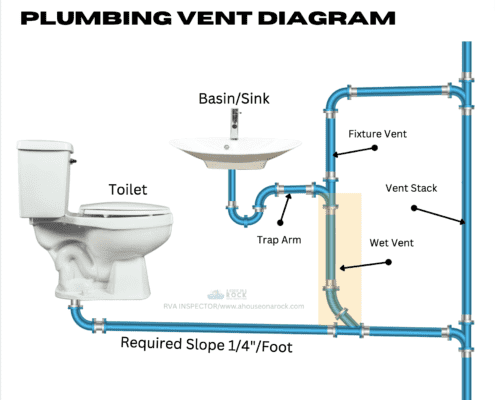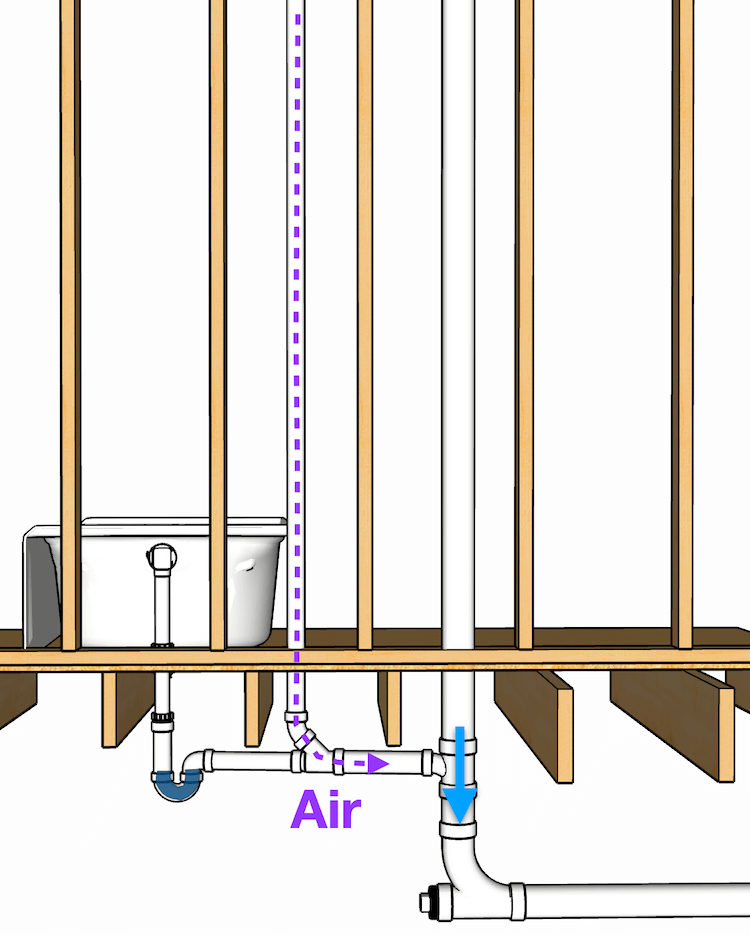The Benefits of Correct Ventilation in Your Plumbing System
The Benefits of Correct Ventilation in Your Plumbing System
Blog Article
We have stumbled on this great article relating to What Is A Plumbing Vent & How Do They Work? directly below on the internet and decided it made sense to discuss it with you in this article.

Correct ventilation in pipes systems is commonly forgotten, yet it is important for preserving the functionality and security of your home's pipes. Air flow aids regulate air pressure, prevent the accumulation of hazardous gases, and guarantee the efficient removal of waste. In this overview, we will explore the value of correct pipes air flow, how it functions, and the advantages it offers your pipes system.
Just How Air Flow Works in Plumbing Systems
Air Pressure Policy
Proper air flow preserves balanced atmospheric pressure within the pipes system. When water flows via pipelines, it displaces air. Without appropriate ventilation, this displacement can produce adverse stress, leading to reduce drains or siphoning of water from catches, which can cause undesirable smells to permeate right into the home.
Preventing Drain Gas Accumulation
One of the most vital functions of plumbing vents is to stop drain gases, such as methane and hydrogen sulfide, from accumulating within the home. These gases can present significant health threats and are highly flammable. Vent pipes allow these gases to leave safely outside.
Assisting in Waste Elimination
Air flow helps in the reliable elimination of wastewater by stopping airlocks in the drain system. When air can stream easily via the vents, it permits water and waste to flow efficiently with the pipes, lowering the danger of clogs and back-ups.
Benefits of Appropriate Ventilation
Improved System Efficiency
Effectively ventilated pipes systems run much more successfully, with fewer blockages, faster draining pipes, and much less pressure on the pipes. This performance expands the life expectancy of the pipes system.
Improved Air Top Quality
By preventing sewage system gases from entering your home, proper air flow contributes to much better indoor air high quality, making your living atmosphere healthier and more comfortable.
Stopping Water Damages
Appropriate ventilation helps avoid water from being siphoned out of traps, which can lead to sewage system gases going into the home and creating water damages gradually.
Steps to Guarantee Correct Air Flow
Consulting Plumbing Codes
Always get in touch with local plumbing codes when developing or customizing your pipes system. These codes supply the essential standards for correct venting and guarantee your system satisfies safety criteria.
Normal Evaluation and Maintenance
Normal evaluations can assist identify prospective air flow issues before they come to be major troubles. Maintenance jobs, such as cleaning air vent pipelines and checking for obstructions, are essential for keeping the system in good working order.
Expert Installment
For brand-new setups or significant alterations, it's wise to hire a professional plumbing. They have the proficiency to guarantee the ventilation system is appropriately designed and installed according to code.
Recognizing Air Flow in Pipes
Air flow in pipes describes the network of pipelines that permit air to move with the drain system. These vents serve several functions, consisting of controling air pressure within the pipes, avoiding sewage system gases from entering the home, and assisting in the smooth circulation of wastewater.
Types of Plumbing Vents
Key Stack Vent
The major stack vent, also referred to as the air vent pile, is the key air vent in a pipes system. It expands from the major drainpipe align with the roofing, enabling gases to leave and fresh air to get in the system.
Branch Vent
Branch vents attach to the major stack air vent and offer specific components, such as sinks, commodes, and showers. These vents make certain that each component has ample air flow to operate effectively.
Air Admittance Shutoff (AAV).
An Air Admittance Shutoff (AAV) is a one-way shutoff that permits air to enter the plumbing system without the demand for a conventional vent pipe expanding through the roof covering. AAVs are generally used in restorations or locations where installing a common air vent is not practical.
Indicators of Poor Air Flow in Plumbing.
Slow Draining Fixtures.
If your sinks, bathtubs, or commodes are draining pipes gradually, maybe an indicator of inadequate ventilation. Inadequate air circulation can produce a vacuum effect, making it difficult for water to drain pipes appropriately.
Gurgling Seems.
Gurgling noises coming from drains pipes are frequently an outcome of air being sucked with water catches as a result of adverse pressure in the pipes. This is a clear sign of insufficient ventilation.
Undesirable Odors.
Drain smells inside your home are a warning that your pipes system is not appropriately aerated. This might imply that sewage system gases are not being effectively vented outside, leading to possibly hazardous problems.
Typical Air Flow Mistakes.
Poor Vent Sizing.
Utilizing undersized air vent pipelines can bring about poor air circulation and pressure discrepancies in the system. It's important to use vents that meet the particular requirements of your pipes system.
Improper Vent Placement.
Positioning vents also far from the fixtures they offer can reduce their performance. Proper positioning guarantees that air can stream easily and effectively through the system.
Disregarding Code Demands.
Building regulations give particular standards for plumbing ventilation. Overlooking these codes can result in a system that stops working to work appropriately and may result in expensive fixings or carcinogen.
Conclusion.
Proper ventilation is a critical component of any plumbing system, making sure that it works effectively and safely. By understanding the significance of ventilation, identifying the indicators of bad ventilation, and taking steps to keep your system, you can stop expensive issues and protect your home's air top quality.
What is a Plumbing Vent and it's used for?All plumbing systems in residential and commercials construction have a plumbing vent. It doesn’t just vent unwanted odors from the drainage system to the outside; it actually serves an important purpose by supplying air to the system.
The plumbing drainage system is actually called a drainage, waste and vent (DWV) system. When water flows down the piping, an air supply (vent) is needed to allow the water to flow. Think of the vertical pipe as a drinking straw. If you plug the top end of a straw, liquid won’t drain from it.
The DWV system in your building consists of a series of pipes connected to each fixture; they extend above each fixture, and the system terminates at an open pipe that extends through the roof. This piping allows air into the system and prevents unbalanced pressures in the piping.
?The vent also prevents the system from drawing water out of a trap at the fixture with the characteristic “glug-glug-glug” as the drain gasps for air. Plumbing traps should drain smoothly and never “glug” or gasp for air.
If you have a drain that empties slowly or gurgles as it drains, this may indicate a venting problem. If you flush a toilet and the sink gurgles, there’s definitely a vent problem. It is good idea to have a Plumber check this.
https://www.ameliashomeinspection.com/blog/what-is-a-plumbing-vent-and-its-used-for

I found that blog posting on What Are Plumbing Vents and Why Are They Important? when looking around the search engines. If you appreciated our blog entry kindly be sure to pass it around. I truly appreciate your readership.
This Site Report this page